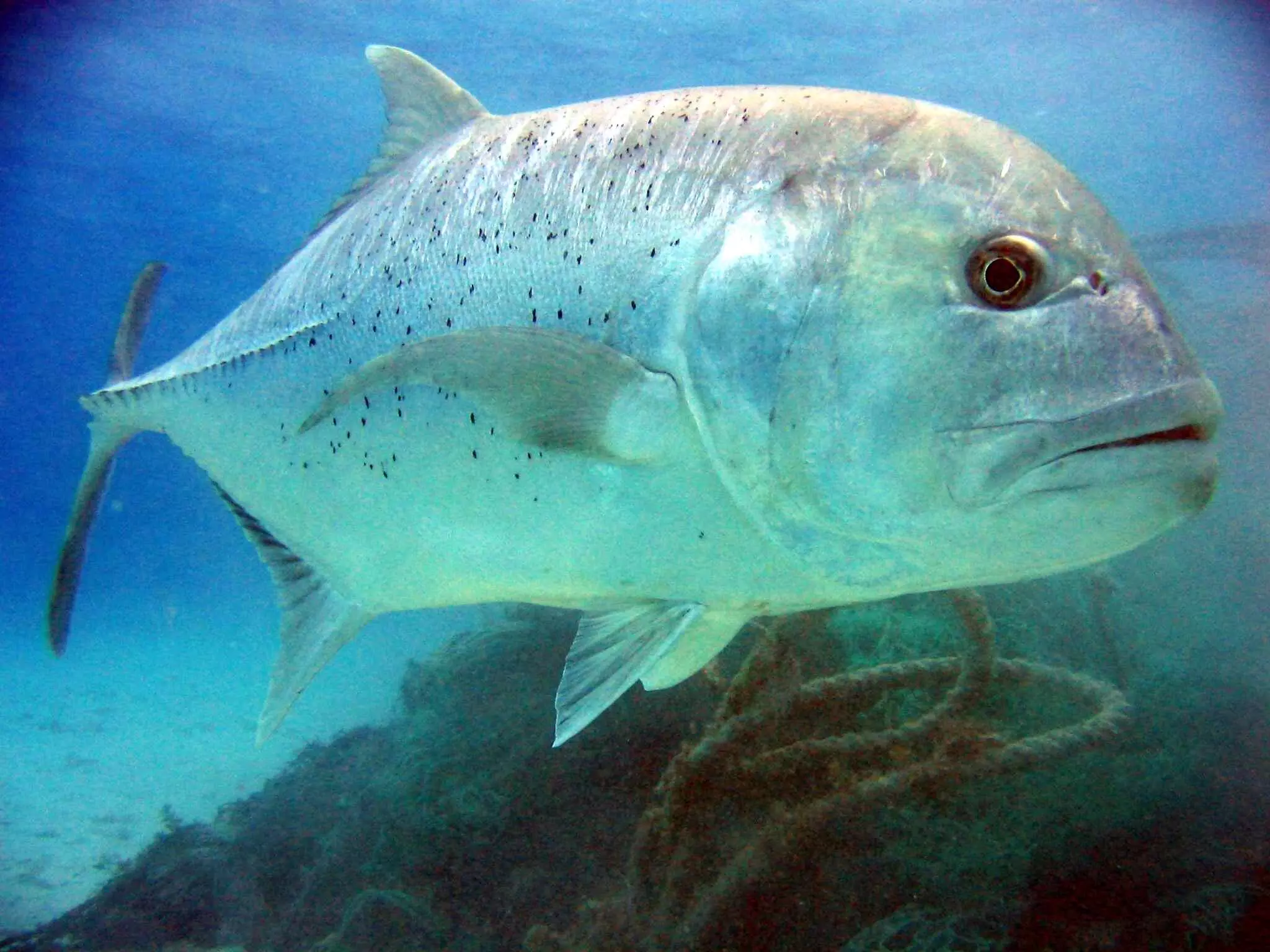CMFRI breeds Giant Trevally with high survival rates amid fish mortality crisis
Giant Trevally, a fish with a highly predatory nature, can reach lengths of up to six feet and weights of 80 kg when fully grown
By Newsmeter Network
Thiruvananthapuram: Kerala, increasingly vulnerable to climate change impacts, has seen its brackish water fish farmers suffer significant losses due to a sudden decline in water salinity caused by flash floods.
In response, a Central government institute has successfully bred seedlings of Giant Trevally, which has a high survival rate in very low salinity, offering a potential lifeline for struggling aquaculture in the region.
The Breeding Centre of the Central Marine Fisheries Research Institute (CMFRI) in Vizhinjam, which has primarily focused on breeding Silver Pompano, among other fish varieties, has artificially bred seedlings of Giant Trevally and will be selling them to fish farmers in Kerala and neighbouring states.
Giant Trevally, a fish with a highly predatory nature, can reach lengths of up to six feet and weights of 80 kg when fully grown. This single-boned fish, which lacks muscle connecting the bones, has significant commercial value worldwide and can fetch over Rs 500 per kilogram.
The scientists at CMFRI, Vizhinjam, told PTI that brackish water fish farmers in Kerala have been contacting them because they regularly lose the fish they cultivate during the sudden, torrential rains that the state has been experiencing in recent years, a visible effect of climate change.
"Giant Trevally is a very tasty fish and always has high commercial demand. We have observed that Giant Trevally can survive in waters with very low salinity compared to Silver Pompano," Dr B Santhosh, head of the CMFRI Vizhinjam centre, told PTI.
Most of the approximately 10,000 brackish water fish farmers in Kerala have primarily been farming commercially viable Pearl Spot fish and Silver Pompano. However, Silver Pompano mortality has increased due to the unpredictable weather and sudden reduction in salinity of the waters in Kerala's backwaters.
"Our goal was to breed a fish variety that could survive in waters with very low salinity and grow reasonably well in a shorter duration. Giant Trevally can grow quickly, and we hope it will allow farmers to harvest the fish twice a year," said Ambareesh P Gopi, the scientist leading the breeding of sea fish varieties at the CMFRI Vizhinjam centre.
The brooding pair of these fish was caught as juveniles from the Ashtamudi Backwaters in Kollam and then nurtured in special tanks.
"We caught juvenile fish weighing between 50 grams and 250 grams and brought them here. We then carefully nurtured them and selected the pairs for breeding after determining their sex through cannulation," Santhosh said.
They also develop micro-feed for the seedlings, which can be smaller than 700 to 900 microns. The centre developed micronutrient-based feed after several experiments, and they continue to test different feeds in various tanks to understand the growth patterns and ideal feed for the seedlings.
The CMFRI Vizhinjam centre also breeds other fish varieties, such as Emperor Fish and Cobia, which are purely sea fish that cannot survive in brackish waters. These fish varieties are mostly purchased by fish farmers based in states like Goa, Karnataka, and Tamil Nadu.
"They have the option of placing cages in the sea to grow them. Emperor fish are not bred anywhere else in India, and Cobia is a highly commercial fish that can grow very quickly," Santhosh said.
The centre is also breeding various types of marine ornamental fish, as marine aquariums are becoming increasingly popular among pet lovers.
With the successful breeding of Giant Trevally, CMFRI hopes to provide an effective climate change adaptation farming solution for Kerala's brackish water fish farmers.
Brackish water refers to water that has a higher salinity than freshwater but lower salinity than seawater. This type of water supports a unique ecosystem and is home to various species of plants and animals that are adapted to its intermediate salinity.
"We have managed to obtain 1.5 lakh seedlings, and we hope to increase that to 3 to 4 lakhs per breeding cycle. We currently have a survival rate of about 15 to 20 percent, which is very healthy," Gopi said.
The Vizhinjam CMFRI centre produces about 3 to 4 lakhs of Silver Pompano seedlings per month for farmers in Kerala and neighbouring states.